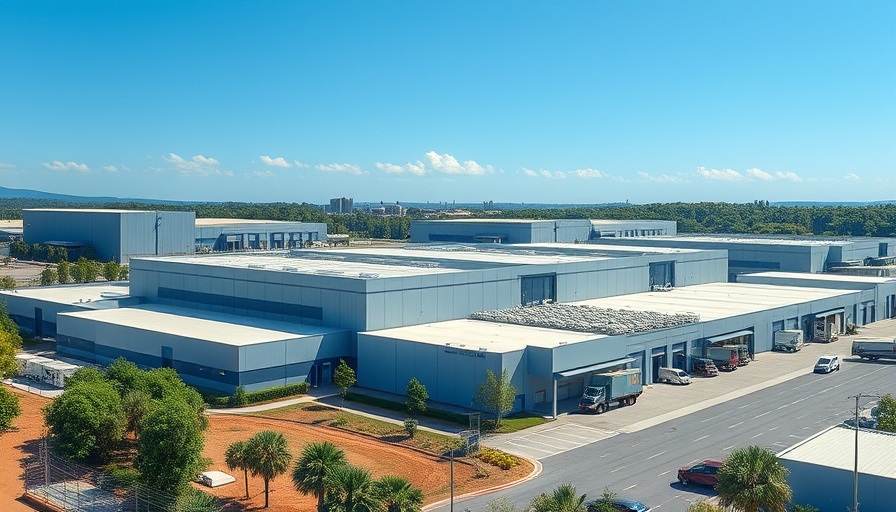
Fremont's Thriving Industrial Sector: A Growing Investment Horizon
The recent acquisition of a fully-leased warehouse in Fremont for $59 million by a prominent real estate investment trust marks a pivotal moment in the Bay Area's commercial real estate landscape. This off-market deal not only underscores the increasing demand for industrial spaces but also sheds light on Fremont’s expanding industrial sector, which shows resilience and growth even amid economic fluctuations.
What This Purchase Means for Investors
Investors should take note of Fremont's evolving landscape as it continues to attract real estate ventures like this latest acquisition. The sustained interest in industrial properties signals a robust market driven by the growing need for logistics and distribution centers, particularly as e-commerce accelerates. Such strategic investments reveal the competitive nature of the commercial property market, making it an appealing opportunity for prospective buyers and business owners.
A Snapshot of Industrial Real Estate Trends
Nationally, industrial real estate has consistently outperformed other commercial sectors. According to recent reports, demand for warehouse spaces has surged, influenced by rapid technological advancements and shifting consumer behaviors. The rise of e-commerce has led companies to reevaluate their supply chains regularly, thus driving interest in strategically located warehouses. Fremont, with its proximity to major highways and tech hubs, stands out as a hotspot for such investments.
Fremont: A City on the Rise
Fremont has steadily transformed from a suburban expanse into a vibrant urban center, bolstered by a blend of technology and innovation. The city’s strategic initiatives to enhance industrial operations, including support for renewable energy shifts in businesses, demonstrate a commitment to sustainable growth. This not only sets an attractive precedent for investors but also contributes to the overall quality of life within the community.
Innovation Driving Commercial Real Estate
As the world transitions into an era dominated by smart technology and sustainability, communities like Fremont are becoming exemplars for how industrial real estate can evolve. With initiatives aiming for energy efficiency and innovative business models, Fremont signals a blend of industrial capacity and environmentally-conscious practices, making the area an alluring locale for stakeholders looking for future-ready investment options.
What This Means for Business Owners and Realtors
For business owners, this shift in the commercial market provides ripe opportunities for expansion. Acquiring space in a developing industrial sector can position businesses favorably for growth and accessibility to markets. Realtors can leverage this interest by sharing insights into upcoming projects or properties that align with evolving market trends, thus connecting buyers with high-potential investments.
Future Predictions and Opportunities
Looking ahead, experts anticipate that the demand for industrial spaces will continue to grow. As more companies realize the importance of having logistical infrastructures to support their operations, regions like Fremont will likely see an influx of investments. Potential buyers should monitor these trends closely, keeping an eye on upcoming commercial developments and planning their strategies accordingly.
As we explore these dynamics, engaging with local real estate developments becomes vital. Whether you are an investor, a business owner, or a realtor, understanding these market shifts will empower you to make more informed decisions. Keep a pulse on Fremont's developments and consider what these opportunities can mean for your ventures.
For insights into navigating the complexities of commercial real estate and strategies for capitalizing on market trends, stay engaged with industry news, join relevant investment groups, and attend local real estate forums.
 Add Row
Add Row  Add
Add 




Write A Comment